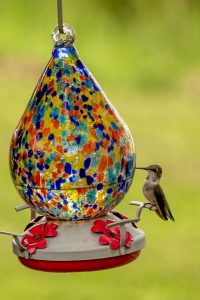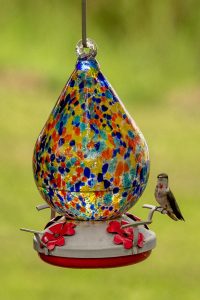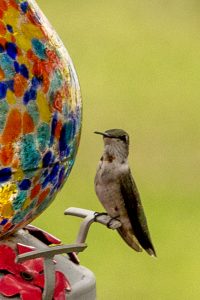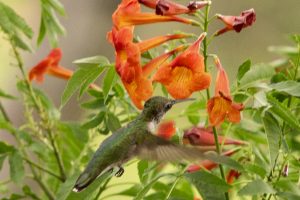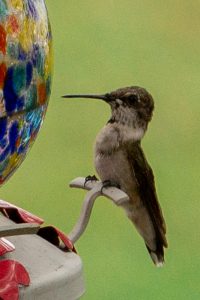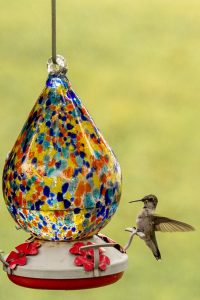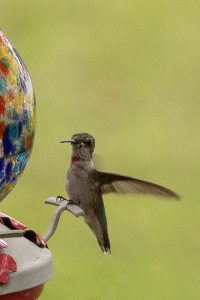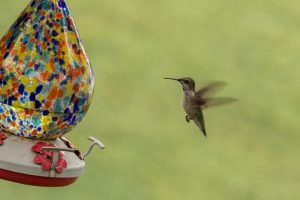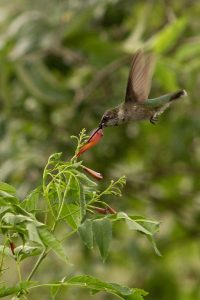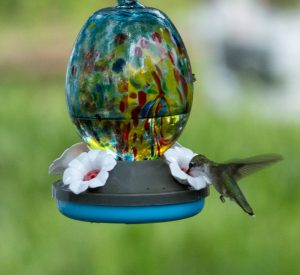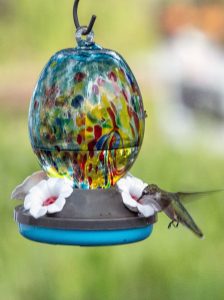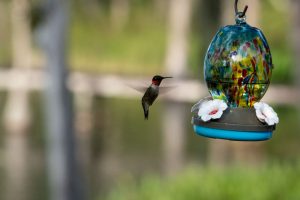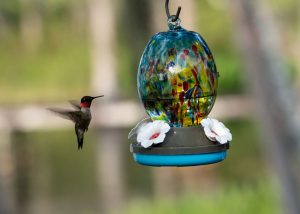A few facts about Ruby-throated Hummingbirds
by- Amber Maxwell
Appearance
Ruby-throated hummingbirds are quite small. They may be the smallest species of bird on the planet. Males and Females alike have iridescent green back and head, and a white belly. Males have bright red and shiny throats with forked tails. The throat of the female is more of a dull grey color and the tail is square and white-tipped. Young ruby-throated hummingbirds tend to look like adult females. I have observed that juvenile males have a red dot on their throats.
Mating
It is said that ruby-throated hummingbirds are probably polygynous, however their mating behavior has not been studied well enough to say for sure. What is known is that each year, males return to their mating grounds in the spring and find a territory before the lady hummingbirds arrive. Once they arrive, males attract them by performing different displays of courtship. If a female is receptive to the male, then they mate and immediately after, separate. The female builds the nest and raises the chicks alone. Female ruby-throated hummingbirds usually care for their chicks until they leave the nest (around 22-25 days)
Lifespan
Female ruby-throated hummingbirds live longer than their male counterparts because the males excerpt extreme amounts of energy defending their territory and during migration season. The longest-living female ruby-throated hummingbird known to us lived to be at least 9 years while the longest-living male lived around 5 years.
Behavior and vocalization
Ruby-throated hummingbirds are mostly solitary creatures. Males are extremely territorial, constantly chasing off intruders. These hummingbirds are diurnal. This means that they are active during the day only. During the night, these hummingbirds can enter a state of torpor which is similar to hibernation. The hummingbirds’ hearts and other vital organs slow down while they sleep. This helps them to survive cold winter months. These tiny birds migrate far distances in the spring and fall. Many ruby-throated hummingbirds have been known to migrate as far as 800km each day during migration.
hummingbirds have a high-pitched and fast call. They use their call most often to threaten each other.
Diet
Ruby-throated hummingbirds eat floral nectar and small insects. When nectar is not available, they can also eat tree sap. These birds are attracted to plants that produce red or orange tubular-shaped blooms. They consume twice their body weight in food each day. They get their water from the nectar they consume.
Ecological roles
Ruby-throated hummingbirds play an important role in the ecosystem. They act as pollinators for many different species of plants. In fact, some plant species adapted specifically to pollination by hummingbirds.

